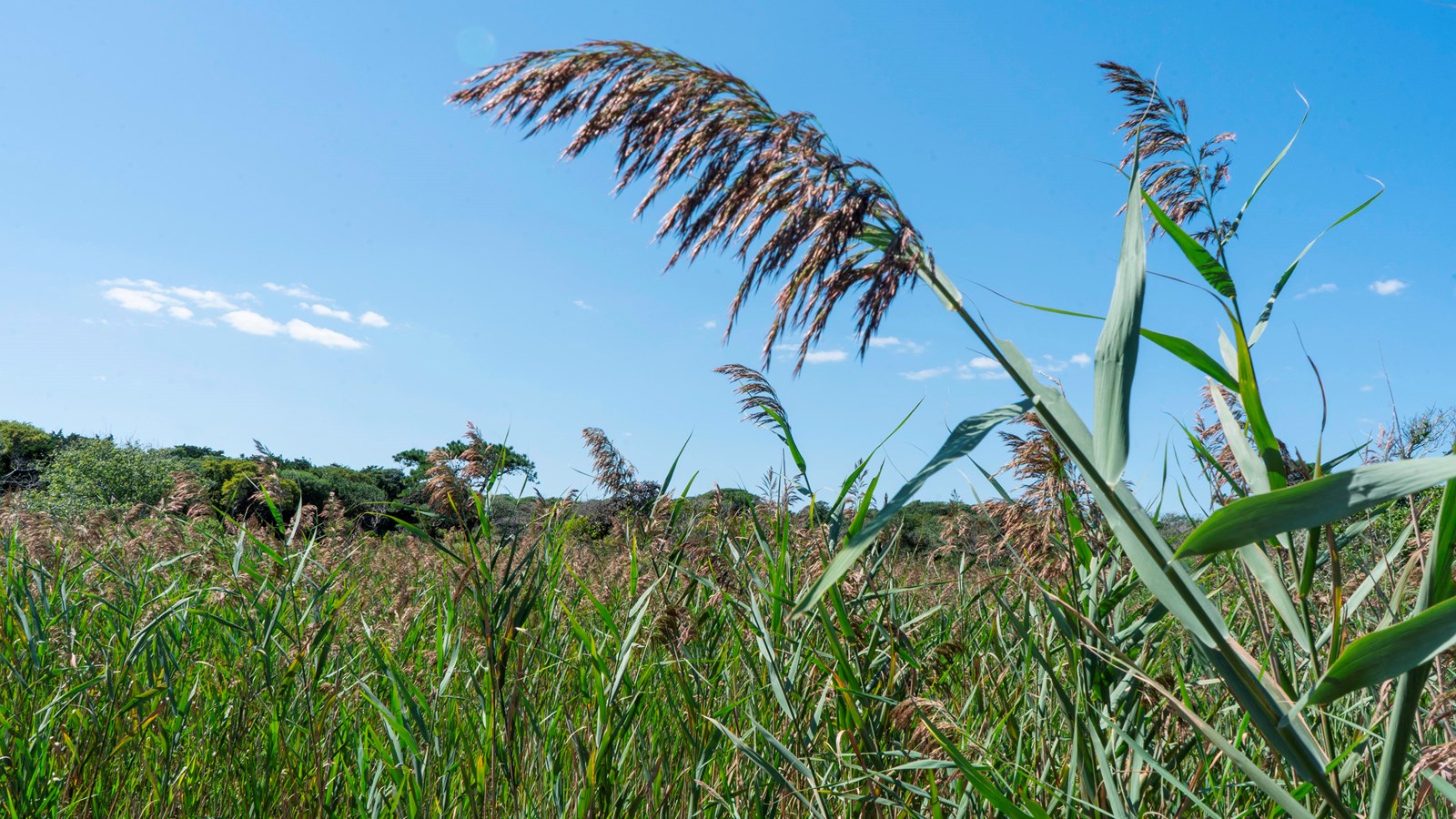Last updated: May 11, 2022
Place
The Sunken Forest Tour: Phragmites Stand

NPS/Sucena
As you came over the last small dune you may have noticed a dramatic change in the landscape. The location where you now stand exists largely on the outskirts of the Sunken Forest, where fresh water bogs give way to freshwater and saltwater marshes. These marshes are dominated not by trees, but by an assortment of species which are well adapted to growth within habitats which feature consistently wet soil. Native species you may spot from here include swamp rose mallow, blueberry, and some strains of native phragmites. However, most of what you see growing here, these tall cornstalk-like grasses, are of a non-native and potentially invasive variety of phragmites.
Phragmites Australis, or common reed, is a tall and hardy wetland grass broadly distributed and found throughout many parts of the world. Though it’s status is a subject of debate, in many places throughout North America it is considered non-native and even invasive. In the same way that an invader takes over the territory of another group of people, an invasive species aggressively takes over the habitat of a native species. In the case of Phragmites Australis, this takeover is the result of its aggressive root system, its tall overcrowding stalks, and the release of a corroding substance called “gallic acid” by the plant as it decays.
Most of this Phragmites Australis is itself something of a colonial artifact, likely introduced by Europeans during the early to mid-stages of expansion into North America throughout the late 17 and early 1800s. It was often used within the hulls of ships as ballast material, or alternatively as thatching on the roofs of houses. Everywhere European ships landed, Phragmites Australis followed.
Today Phragmites Australis is closely observed and maintained by the National Park Service, especially in areas where it appears to be expanding. Here in the Sunken Forest Phragmites Australis is considered somewhat naturalized, having replaced native stains of Phramites Australis that came before. Recent DNA evidence suggests that some strains of Phragmites Australis actually predate European colonization, though these strains are usually less common and less aggressive.
